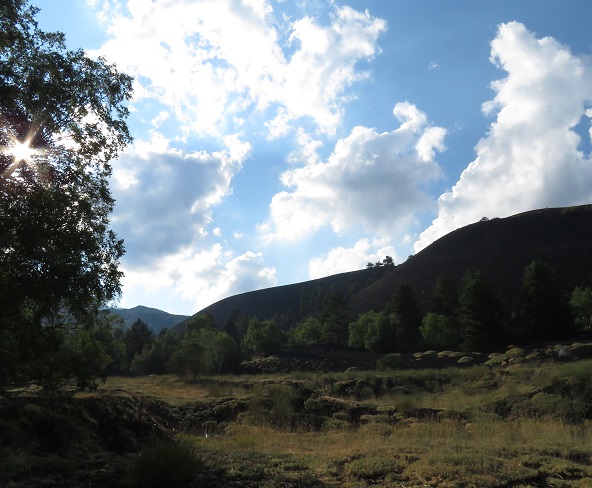Today the Sartorius Hills, or Sartorius Craters, are one of the many tourist destinations on the northern side of Mount Etna. Harmless black hills, surrounded by a wood of cheery birch, chestnut and oak trees, families go picnic here, and hikers test the strength of their legs as they climb each crater. But so much beauty (on one side you can admire the top of the volcano, on the other side the sea) was born, as always happens on Etna, from a fire devastation. The Sartorius, in fact, were formed during an eruption. In 1865.
How did the eruption start?
The eruption started in January 1865 and ended five months later, going on at specific periods. In an Italy fresh from political unification, Mount Etna made itself known even beyond the borders of Sicily, with this terrible spectacle that also put some town in danger.
On January 28, a strange gas emission began from the Frumento delle Concazze Hill area. This was followed by roars and earthquakes that lasted for a long time, until the next day. Shortly before midnight on January 29, in fact, a fracture made its way up the north flank of the volcano: three tall lava fountains emerged from the woods, between 1800 and 1750 meters above sea level. Not even twenty-four hours later, eight vents opened on the extension of the fracture which reached 400 meters in length!
 Evolution of the eruption
Evolution of the eruption
In the first week of February the fractures had already become real craters. Initially small ones, then increasingly taller. The lava, as well as with the fountains, began to come out in the form of streams which, however – at first – seemed go slow.
If the first streams stopped already on February 12, many others came out between March and May of the same year, alternating short breaks. Each stream of lava proceeded with different speeds and one approached the village of Vena. It was the intervention of the Virgin Mary, according to popular belief, that stopped the river of fire. To remember this, there is still today a votive altar with the date of those days.
The eruption was considered as finished on June 28, 1865. The row of craters that had formed was a terrible -but also fascinating- sight, which the German geologist Wolfgang Sartorius would have loved. He was the first to draw up a detailed geological map of Etna, in 1841. At the time of the eruption he was still alive, but living in Iceland for his studies. The geologists from Catania decided to dedicate the new “lava button line” to him: it is still known as Sartorius Craters today.
Visit the Sartorius Craters
The Sartorius path is one of the easiest on Etna. Very flat, it also allows you to climb the first two small craters (the others, steeper and higher, are more suitable for real trained hikers). Birch groves and viewpoints along the way allow you to enjoy the resort even with children and the elderly.
From Milo or Linguaglossa, follow the Mareneve regional road. Coming from Milo, take a detour before reaching Piano Provenzana, precisely at the crossroads for the Citelli refuge, following the signs for the refuge (on the left). The Sartorius are after a few bends, on a small road closed by the Forest Police barrier. From Linguaglossa, you must first pass the crossroads for Piano Provenzana continuing towards Milo and Zafferana, then turn towards Citelli (on the right). PHOTOS BY GRAZIA MUSUMECI